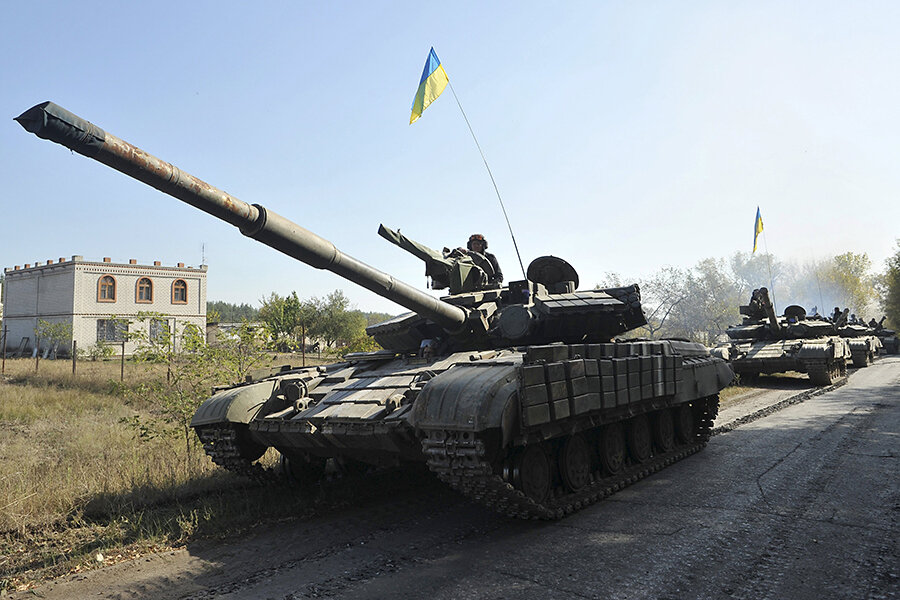Ukraine creeping toward peace? Kiev, rebels pull back tanks, artillery
| Kiev, Ukraine
Ukraine has started withdrawing tanks and light artillery from the frontline in the eastern region of Luhansk in line with an agreement with Russian-backed separatists, Kiev's military said on Monday.
Ukraine and separatist leaders agreed last week to extend a pull-back of weapons in eastern Ukraine, which rebels said could mean an "end to the war" with the Ukrainian government.
"Today at 11.00 (0800 GMT) in Luhansk region we began a simultaneous removal of T-64 and T-72 tanks and in some places anti-tank artillery D-48 and D-44 and ... mortars," military spokesman Ruslan Tkachuk said on Facebook.
Ukraine has 360 tanks in the conflict zone and 1,400 armored personnel carriers, according to military data published at the end of August.
Mr. Tkachuk said the withdrawal had been agreed with representatives of the Organization for Security and Co-operation in Europe (OSCE) and should be completed within the next 14 days.
"This is an opportunity to do even more to stabilize and normalize the situation ... It's an opportunity both sides need to recognize and build upon," Alexander Hug, deputy chief monitor of the OSCE monitoring mission to Ukraine told Reuters.
A ceasefire is holding in eastern territories, with both sides reporting few or no violations.
Nevertheless the threat of renewed violence remains. Last week the OSCE said it had spotted a new kind of Russian weapons system in rebel-held territory, possible evidence of Moscow's continued interest in Ukraine even as it focuses on Syria.
"Without these weapons being moved away and locked away the risk of re-escalation remains ... The military logic that reigns in eastern Ukraine has to be replaced," Mr. Hug said.
On Saturday, a senior rebel official for the self-proclaimed 'Donetsk People's Republic' said separatist forces would begin withdrawing their weapons after Oct. 18 "on the condition that it is quiet", the rebel website DAN reported.
Fighting between Ukrainian government forces and the separatists in Ukraine's eastern Donetsk and Luhansk regions has killed more than 8,000 people since mid-April 2014. Russia denies Western and Kiev's charges of direct involvement in the conflict.






